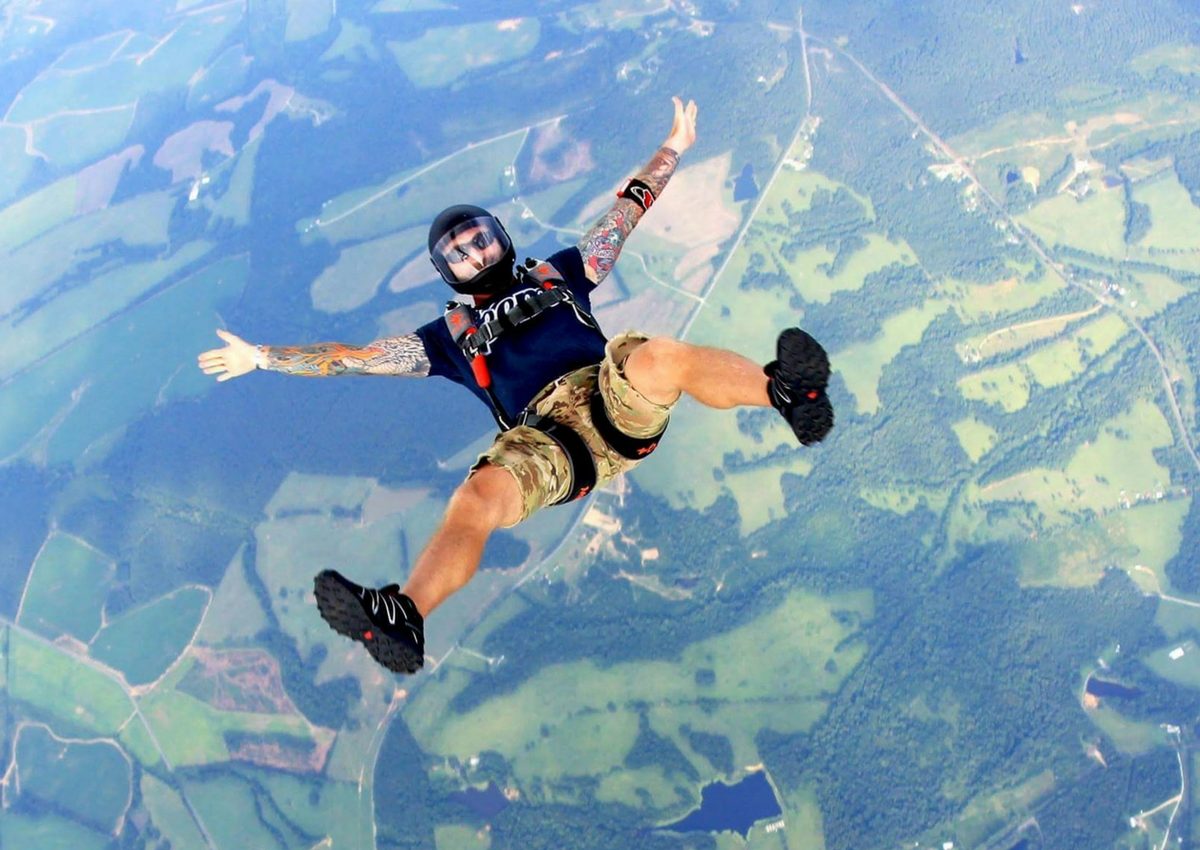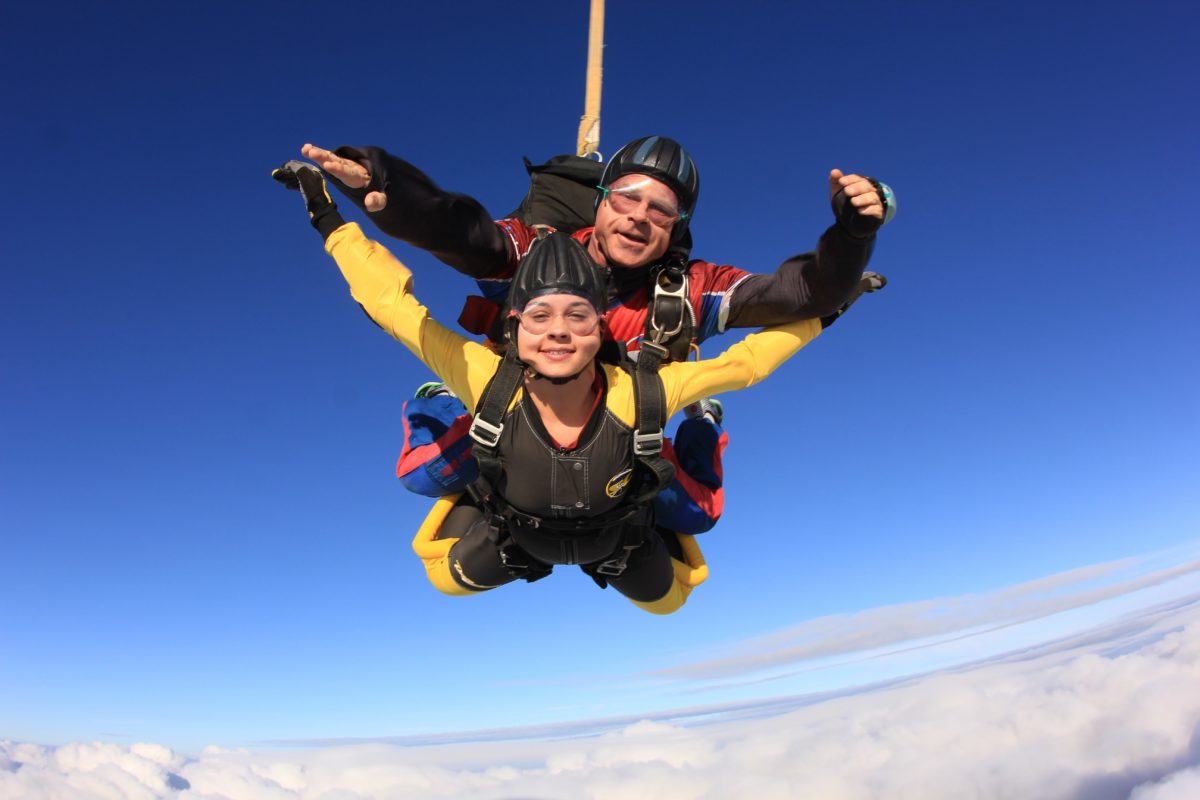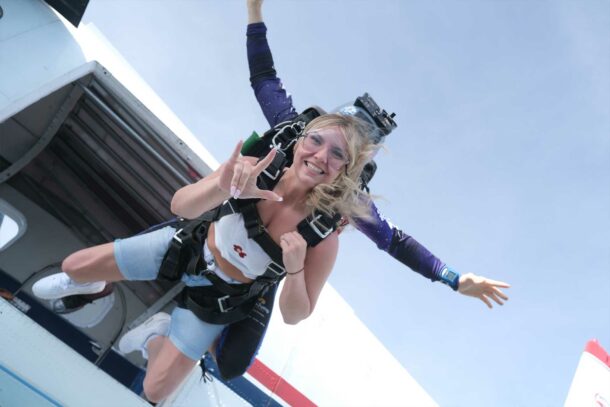How Fast Is Skydiving?
Monday, June 20, 2022
Understanding the Speed of Skydiving
Okay, we all know that gravity exists and that when you jump from an airplane you reach wicked high speeds during freefall – but how fast is skydiving, actually? The answer is the fastest the human body can fall! The scientific term for this is terminal velocity. Let’s get into the details.

The Science of Freefalling
Terminal velocity is determined by the overall mass and shape of an object (or human). The weight of an object will cause it to fall at a specific rate, while the shape of the object will determine the air resistance or drag. Drag causes the fall rate to slow down. Once the equilibrium is found between the rate of fall (from gravity) and the rate of drag (from the air resistance), terminal velocity is reached. This equal feeling from above and below is why you don’t feel like you’re falling during freefall – you feel like you’re floating! Trust us, it’s not scary – it’s amazing!
So, how fast is skydiving?! The fastest skydiving speed, on average, is about 120 mph. This is considering the standard belly-to-earth skydiving position taken during a tandem skydive.
How Long Does It Take to Reach Terminal Velocity When Skydiving?
The amount of time it takes for a person to reach terminal velocity depends on a few things. These factors include:
- Type of aircraft you jump from (how fast you’re already moving at exit)
- Your body position at exit
- Your total weight
- The density of the air
Considering these factors, it can take anywhere from 5 to 10 seconds for a skydiver to reach terminal velocity. This is not how long a skydive takes though. The entire freefall portion of your skydiving experience typically lasts about 60 seconds in total – also known as the most awe-inspiring minute of your life!
Tandem Skydiving = Double The Mass!
The first folks to tandem skydive realized that the terminal velocity for a tandem skydive is different because it’s based on the mass of two people (and not to mention the heavy gear). They discovered that the weight was so great, in fact, that it was almost too fast for skydiving! Therefore, to ensure a safe and successful parachute opening – the drogue was invented to help slow down the fall rate to the standard 120 mph.
The drogue is essentially a tiny parachute that is released by the tandem instructor after exiting the plane and upon entering into freefall, creating the resistance necessary to help decrease speed for a smooth parachute opening. The drogue is the small-but-mighty, white balloon-looking-thingy you might have seen in other tandem skydiving videos.

Skydivers Can Change Their Terminal Velocity
Skydivers can change their fall rate based on their body position. There are many different orientations to fly in, from belly flying and head up (like sitting in the sky) to head down (like high diving)! The more surface area you present towards the wind, the more drag you will create, and thus, the slower you will fall. To keep things simple, the smaller you are, the quicker you fall!
This manipulation of air resistance is how skydivers are able to move through the air and control which way they turn or move forwards and backward.
The Need For Speed!
Those who practice the freefly skydiving discipline will fly head down or head up. Their surface area is so small that they can speed up their terminal velocity to around 160 mph!
Even more impressive is skydivers who fly in an angled position, essentially rocketing through the sky. Angle flyers can reach extraordinary speeds in this position, above 300 mph! The current Guinness World Record for the fastest speed in ‘speed skydiving’ is 373.6 mph held by Henrik Raimer at the 2016 FAI World Championships! WOW!
Skydivers can also use wingsuits (aka squirrel suits, birdman suits, or bat suits) to manipulate their speed. Presenting more surface area to the wind allows wingsuit flyers to slow way down (recorded as low as 25 mph!); presenting less and they can hit speeds above 200 mph. The current Guinness World Record for the fastest horizontal speed with a wingsuit is 246.6 mph!
Are you ready to reach YOUR terminal velocity? Feel the rush with Skydive Carolina – book your jump today! Blue skies.
Related Article: What to Expect During Skydiving Freefall
Copyright © 2024, Skydive Carolina, All Rights Reserved.
DropZone Web Design & Marketing by Beyond Marketing, LLC





